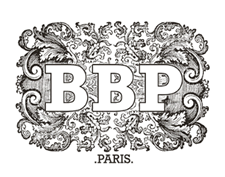If you’ve decided to have friends over for food and wine so you can try a new recipe, you may find yourself browsing the aisles of your local bottle store. You see dozens of wine varieties, and all with varying price tags. Some can be low as $20 – or even lower, and some can cost hundreds of dollars. Where does this price variety come from?
Production Costs
The costs associated with producing wine can be one of the primary factors in pricing an individual bottle of wine. As each manufacturer’s expenses are different, you can expect the unit rate to be different.
The most obvious costs are, of course, the bottles, barrels, and grapes at the very initial manufacturing stages. The manufacturer then factors in the labour costs to make that wine and utilities associated with its production.
If you have a craving for vintage wine, the production process can often be quite complex and labour-intensive. The labour element of this wine type can definitely impact the consumer price tag.
Then there’s marketing, sales, and administration costs. If a manufacturer has invested heavily in promotion, those costs are ultimately passed on to the consumer. Most manufacturers don’t sell directly to the consumer, so the markup from distributors, wholesalers, and retailers also enter the equation.
Mother Nature also often throws her two cents into the equation. Supply and demand after a challenging growing season can impact the cost of wine.
Grape Types
Believe it or not, the grape type plays a role in the wine cost because some are more expensive to grow and produce than others. For example, the low average cost of sauvignon blanc grapes is around $1.71 USD. In contrast, the high average price of cabernet franc grapes is $5.16.
Barrel Type
The barrel type can also impact the production costs that lead to a higher-priced bottle of wine. Expensive wines often go through a more expensive production process, such as with oak barrels that produce lower yields. Large stainless-steel tanks can hold more wine and cost less to produce, which can drive those prices down for both them and the end consumer.
The Perceived Value
If a manufacturer does their marketing right, then the perceived value of wine can also drive up the price tag. If wine falls into the luxury category, it can be worth as much as someone is willing to pay for it.
That’s why a $500 bottle of wine may fly off the shelves and sell out, whereas $20 bottles sell at a steady rate. You could say the same about designer garments. It’s not so much that the quality is better, but the marketing and name can play a massive part in the market.
Ultimately, though, your taste preferences can dictate whether you buy a $20 bottle of wine or one that costs upwards of $500. While many things can determine how much wine costs, you only need to spend as much as you wish on a bottle that you actually prefer to drink and pair with your food.

